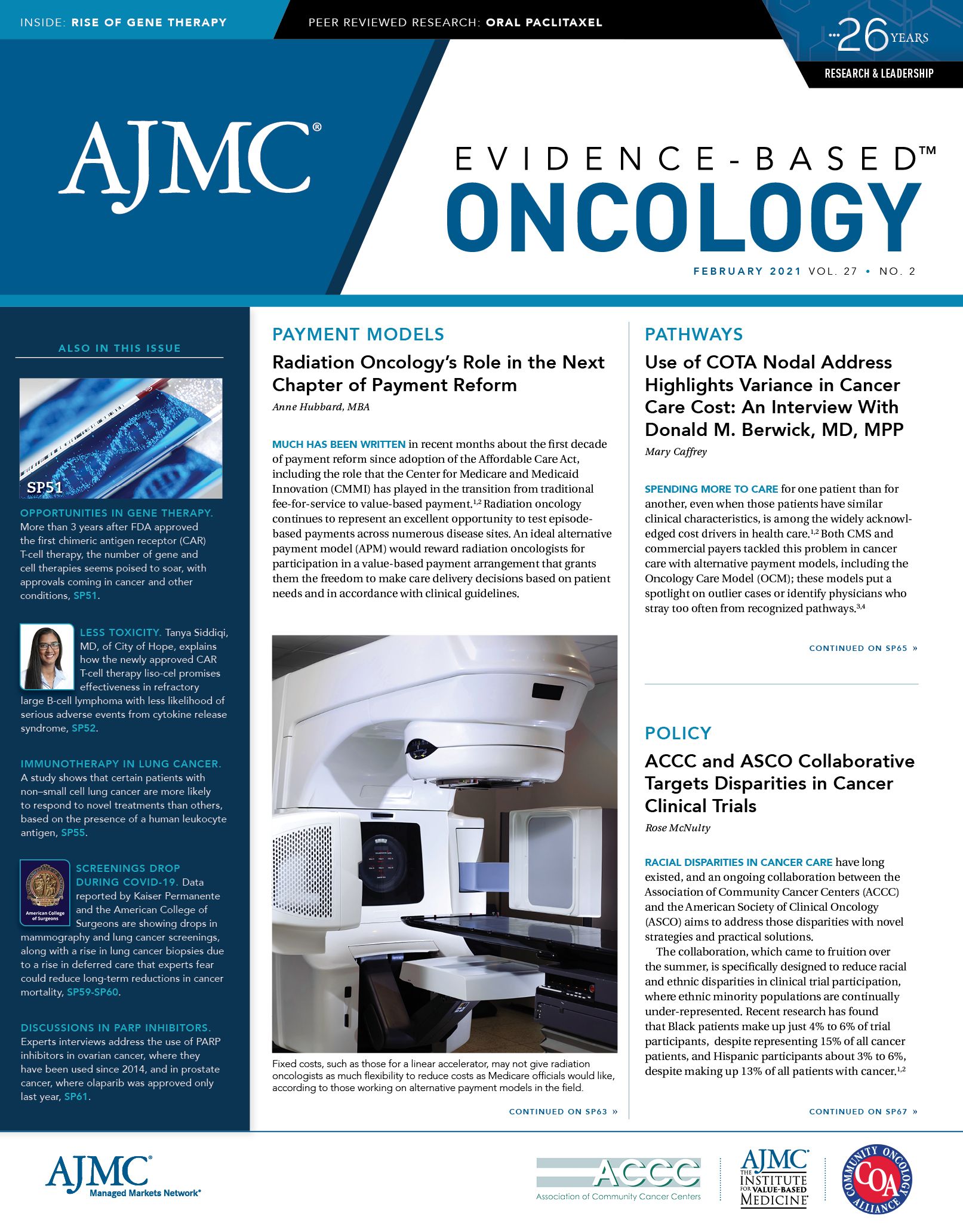Publication
Article
Evidence-Based Oncology
Flying the Plane While You Build It
Author(s):
In this issue of Evidence-Based Oncology™ we see a foreshadowing of what the future of cancer care innovation could look like and how we may learn to move forward, safely, at an ever-accelerating pace.
We are in the greatest period of innovation cancer care to date. Each day, there is an advance in genomic testing, patient risk stratification, a targeted therapeutic or an immuno-oncologic agent, a cellular therapeutic, or a new approach to care. This astounding rate of innovation is far outpacing our ability to systematically assimilate these treatments into practice and align payment in an effective way to incentivize an ever-evolving definition of best practice. As current systems struggle to adapt to this new reality, the culture of medicine and systems of care are, thankfully, inherently conservative. There is a sense of caution around new technologies and payment models that is frequently at odds with the ever-accelerating pace of innovation. The “plan-do-check-act” culture is deeply embedded in our systems of care. Far too often during my residency and fellowship programs, I heard senior attending physicians use the term “bold” as a pejorative indictment rather than a compliment. This desire to ensure patient safety is essential; yet, there are enough patients whose unmet needs might be served by rapid integration of new technologies that we find ourselves at a tension point in the evolution of cancer care.
In Silicon Valley, where former apricot and cherry orchards now burst with silicon wafers and lines of code that have changed human experience, innovators rally around the idea of ‘flying the plane while you build it.” This paradigm is “rooted in the idea of ‘iterative’ software development—ship it and fix it and ship it again—in contrast to the earlier approach of tinkering for years and finally shipping.”1 This model does not ignore safety, functionality, or investor dollars; instead, it is grounded in the need to transcend the limitations of a slower, more plodding model of producing change. The metaphor is an apt one for bringing innovation at a faster pace to cancer care—while we should never undermine safety, our patients’ urgent needs demand that we move faster and even embrace a sense of “boldness” in moving forward.
In this issue of Evidence-Based Oncology™ we see a foreshadowing of what this future could look like and how we may learn to move forward, safely at an ever-accelerating pace. With this issue of EBO, we shift from cover themes to regular departments; both our Targeted Therapies & Immuno-Oncology section, featuring an interview with Tanya Siddiqi, MD, and our AJMCtv section cover advances in treatment technology that promise more effective, less toxic treatments for patients with unmet needs. In our Precision Medicine section, we review advances in lung cancer treatment, empowered by innovations in genomic testing, that have improved patient survival and quality of life for patients with advance cancer. Our Payment Model feature reviews the challenges of bringing cost transparency and predictability to cancer care in the area of radiation oncology. In our Pathways interview with the health care quality visionary and former CMS Administrator Don Berwick, MD, MPP, we learn about the importance of using carefully curated clinical data to create a more robust risk-segmentation model to discern the relationship between the individual clinical risk of a patient and the cost of care.
Given the transcendent technologies arriving in the cancer care domain, we need to embrace a new boldness in integrating and incentivizing patient access to care. This demands evolution of our payment systems to recognize the unique risk and clinical needs of patient care, while reducing low value care in our system. It is possible to create a system that brings speed, safety, access, and innovation to patients impacted by a diagnosis of cancer. The ability to navigate the opportunities and challenges of this new paradigm brings with it the ability to improve care disparities, increase the value-centricity of care, and ensure that care becomes iteratively and more deeply patient-centered.
REFERENCE
1. Walker R. Build the plane while you’re flying it. The Christian Science Monitor. Published March 24, 2016. https://www.csmonitor.com/The-Culture/The-Home-Forum/2016/0324/Build-the-plane-while-you-re-flying-it. Accessed February 4, 2021.






